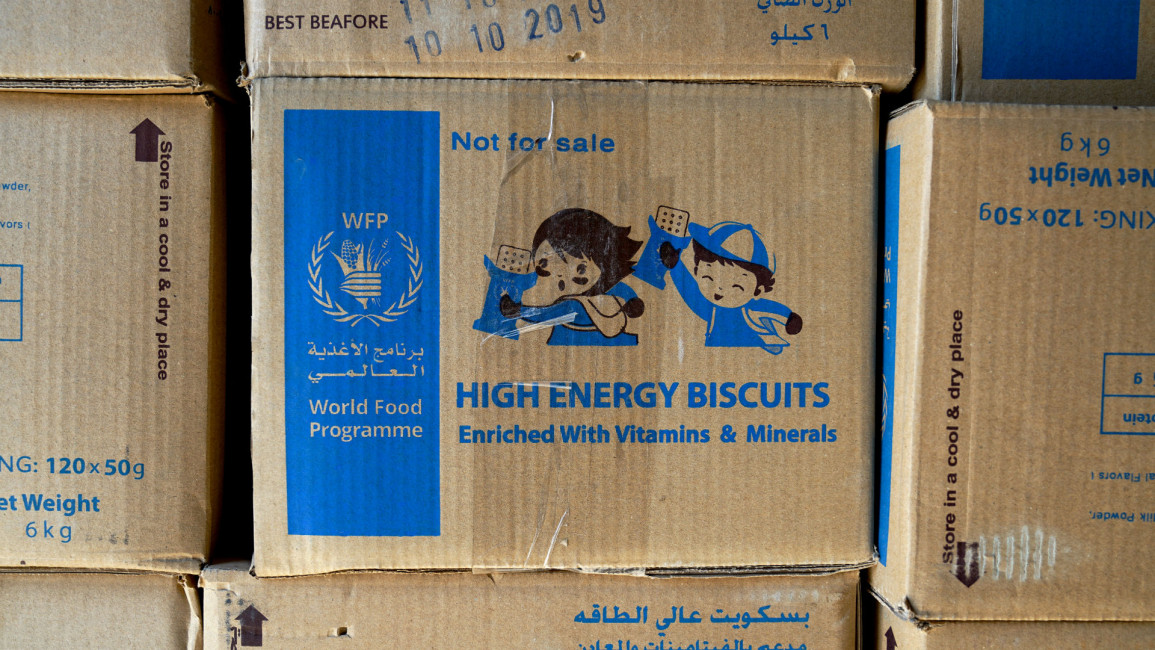WFP gains access to vital Yemen food aid
The World Food Programme said it gained access on Sunday to vital food aid on the outskirts of Yemen's flashpoint city of Hodeida a month after postponing its mission for security reasons.
The Saudi-led coalition fighting on the side of the government accused the Houthi rebels of denying a group from the UN agency access to the Red Sea mills warehouse in April.
The WFP had said the mission was postponed due to "security reasons".
WFP spokesman Herve Verhoosel said a WFP-led mission and a technical team of the Red Sea mills company gained access to the food aid.
"The technical team will remain at the site to clean and service the milling equipment in preparation for the milling and eventual distribution of the wheat," Verhoosel told AFP in an emailed statement.
Before the UN lost access in September the Red Sea mills held 51,000 tonnes of grain, which was enough to feed more than 3.7 million people for a month.
In February, a WFP team visited the mills warehouse for the first time since September, when they became inaccessible due to the conflict between pro-government forces and the Houthi rebels.
The WFP said laboratory tests confirmed the wheat had been infested with insects and had to be fumigated to feed million of people.
"An assessment carried out following the 26 February mission to the mills concluded that around 70 percent of the wheat may still be salvageable," Verhoosel said.
"However, the flour yield will be lower than normal due to the hollow grains (caused by weevil infestation) that will be sifted out during milling."
He added that the food will have most likely further deteriorated in quality due to the hot weather.
This comes after an agreement was struck in Sweden in December, in which Yemeni rivals agreed to redeploy their fighters outside the ports and away from areas that are key to the humanitarian relief effort.
Fighting in Hodeida, whose port serves as the country's lifeline, has largely stopped since the ceasefire went into effect on December 18, but there have been intermittent clashes.
Both the government and the Houthis have been accused of violating the truce deal, while an agreed redeployment of forces has not yet been implemented.
The more than four-year conflict in Yemen has killed tens of thousands people, many of them civilians, relief agencies say.
The fighting has triggered what the United Nations describes as the world's worst humanitarian crisis, with 3.3 million people still displaced and 24.1 million - more than two-thirds of the population - in need of aid.
'Most destructive'
A UNDP report published last week described the Yemen conflict as the most destructive conflict since the Cold War.
The UNDP report sheds light on the humanitarian and economic impact of the conflict, which has set the region's already poorest nation back at least 21 years.
"If the war ends in 2022, development gains will have been set back by 26 years – almost a generation. If it continues through 2030, that setback will increase to four decades," the report states.
Shocking statistics showed that Yemen ranked 153 on the Human Development Index, 138 in extreme poverty, 147 in life expectancy, 172 in educational attainment and was already on the World Bank's low-middle income category, according to the report.
"Human development has not just been interrupted. It has been reversed," asserted UNDP Yemen Resident Representative, Auke Lootsma.
"Even if there were to be peace tomorrow, it could take decades for Yemen to return to pre-conflict levels of development. This is a big loss for the people of Yemen."
The report showed Yemen's loss of economic output will increase to $181 billion in 2022 from $89 billion in 2019, depending on when the conflict ends.
That figure is expected to rocket to a whopping $657 billion in 2030 should the war continue till then, the report warned. The study also estimates that 71 percent of Yemen's population will be living in extreme poverty while 84 percent will be malnourished by 2030.
"The long-term impacts of conflict are vast and place it among the most destructive conflicts since the end of the Cold War," states the report.
Further deterioration of the situation "will add significantly to prolonged human suffering, retard human development in Yemen, and could further deteriorate regional stability," the report added.
More than four years into the Saudi-Emirati war on the Houthi rebels in Yemen, recent figures by ACLED suggest that more than 70,000 have been killed since the coalition intervened to reinstate the government following the rebels' takeover of the capital.
Follow us on Twitter: @The_NewArab



